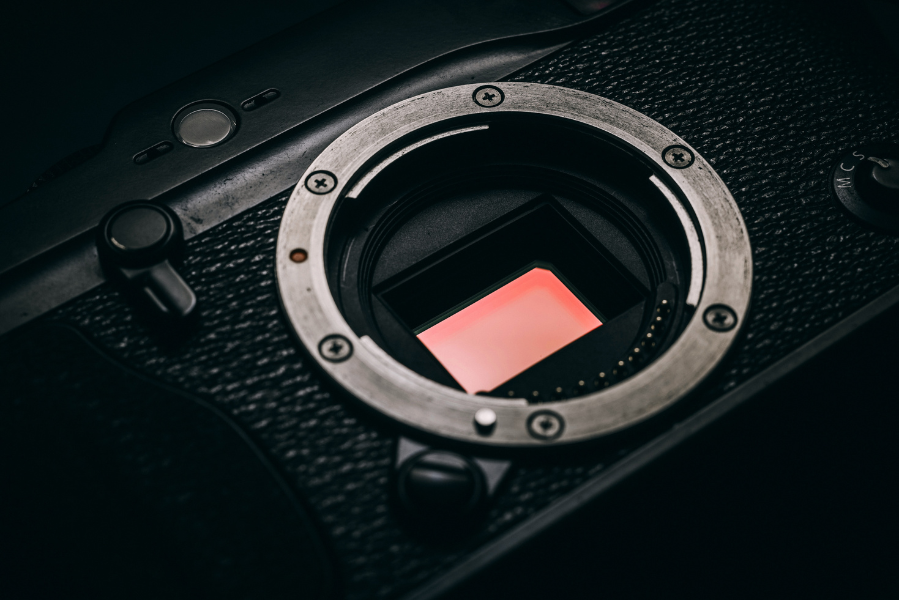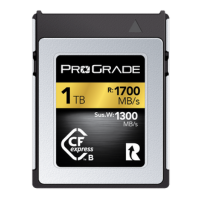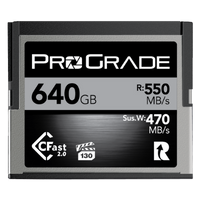Are you in the market for a new camera or looking to learn more about the equipment you already own? If so, understanding camera sensors is essential. Even if you’re a seasoned photographer, mastering the basics of sensor technology can help you make better choices when selecting new equipment.
In this comprehensive guide, we’ll demystify the world of camera sensors, starting with the basics and exploring how sensor type and size impact your photography. Read on for tips and guidance that will help you make the right decisions when choosing a new camera.
Introduction: The Role of Sensors in Digital Photography
At its simplest, a camera sensor is a device that captures light, converting it into an electronic signal. This signal is then processed by the camera to create an image. But what does this mean for you as a photographer? Understanding how sensors work helps you appreciate their importance in creating high-quality images.
Sensors are also essential when it comes to choosing the right camera. Manufacturers use different types of sensor technology, and understanding their features is key when selecting equipment that best meets your needs.
When capturing an image using a film camera, the shutter opens, exposing the film to light. The film would record the light, turning it into a photographic image. So with the switch to digital technology, the role of the film is taken over by a sensor. This guide will break down the differences between various digital camera sensor types and sizes, and explain how they affect your photography.
Decoding Camera Sensors: What They Are and How They Work
A camera sensor is a silicon-based chip that records light data captured through the lens. Instead of using film to record an image, digital cameras use this sensor to convert data into a digital file.
Each sensor consists of millions of light-sensitive pixels, or photosites, which are very small areas made up of a photosensitive material that converts incoming light into electrical signals. The number and size of the pixels on a camera’s sensor determine how much detail is captured when taking a photo. This data is then processed by the camera to create an image.
There are two main kinds of sensors — CCD (charge-coupled device) and CMOS (complementary metal-oxide semiconductor). CCD sensors were used for years in the early days of digital photography, as they offered superior quality to CMOS with better noise control and higher dynamic range. They are still used today in some budget compact and medium format cameras, but they have largely been replaced in the market by CMOS sensors as the technology improved over time. CMOS sensors are the industry standard today, as they work more efficiently than CCD, have better low-light performance, cost less, and work better for high-speed capture.
CMOS sensors are defined by their sizes. There are multiple sensor sizes, but the most popular are: full frame, APS-C, and micro four thirds. We’ll explore those (and others) in detail later.
But first, a note about color. Unlike film, digital sensors record light in monochrome. Because of this, camera sensors use a color filter placed over each pixel which allows the sensor to display colors and accurately represent the scene. The color of each pixel is determined by the frequency of the light wave that passes through the filter.
Exploring Sensor Sizes: Full Frame, APS-C, Micro Four Thirds, and More
The size of the sensor a camera uses can have a big impact on the quality of your images. The most popular types available today are full frame (or 35mm), APS-C (or crop sensor), and Micro Four Thirds. Here’s an overview of each, plus a few additional sizes and the types of cameras they are used for.
- Full Frame sensors: measure 36mm x 24mm and are the same size as traditional 35mm film. Full-frame cameras offer an ideal combination of image quality, low-light performance, noise control, and dynamic range. They are also well suited for a wide variety of shooting styles, from landscape to portrait to street photography. You will find full-frame sensors in both DSLR and mirrorless cameras, and they are very popular with professional photographers. They are best suited for wide-angle and medium telephoto lenses, as these offer the most resolution. They are the gold standard for professional photographers.
- APS-C sensors: measure around 22mm x 15mm (or 23.6mm x 15.6mm). They are smaller in size than full frame sensors, so they capture less light, but they are still great for general photography needs and offer excellent quality at an affordable price point. You will find APS-C sensors in a wide range of cameras, from entry-level DSLRs to mirrorless interchangeable lens systems. They are ideal for standard and telephoto lenses.
- Micro Four Thirds sensors: measure roughly 18mm x 16mm and are the smallest format available today. Developed by Olympus and Panasonic, this standard offers excellent image quality in a compact body, making it ideal for travel photography. They are also great for street photography, as they can be discreetly used in crowded spaces.
- Medium Format sensors: measure between 43.8mm x 32.9mm and 53.7mm x 40.4mm, depending on the type of camera they are used in (e.g., DSLR or mirrorless). Medium format cameras offer superior image quality and low-light performance at a higher price point than other formats. They are mainly used by professional photographers for commercial work and studio portraits.
- “Inch” sensors: these are the sensors found in smartphone cameras, action cameras, and some compacts. They measure roughly an inch in size or smaller and offer excellent image quality, but they are limited to small focal lengths and lack the resolution of larger sensors.
Keep in mind that sensor sizes are not standardized across the different brands, so the dimensions of a full frame, APS-C, or other size sensor will vary from one manufacturer to the next.
The Impact of Sensor Size on Your Photography
As you can see, there are quite a few different sensor sizes available. But what does this mean for your photography? In addition to the resolution of your image, sensor size also affects your camera’s low-light capability, image quality, depth of field, and your angle of view. Let’s explore each of these concepts.
- Image Resolution: the larger the sensor, the higher the resolution of your image. A full frame camera can capture more detail than an APS-C or Micro Four Thirds camera because it has more pixels on its sensor.
- Low Light Performance: larger sensors offer better low-light performance since they are able to capture more light data. Full frame and medium format cameras are particularly superior in this regard.
- Depth of Field: larger sensors allow for a shallower depth of field, where only the subject is in focus while the background is blurred. This makes it easier to create stunning portraits with beautiful bokeh.
- Angle of View: the size of the sensor will affect the angle of view, or how much of a scene can be captured by a lens. A full frame sensor will capture a wider angle of view than a smaller APS-C or micro four thirds sensor, allowing you to fit more into your frame.
Choosing the Right Sensor: Factors to Consider
When choosing the right sensor size for your photography needs, there are several factors to consider. Are you a professional photographer who needs maximum image quality or an amateur who is just starting out and wants something more affordable? Do you need the low-light performance of a full frame sensor or are you more focused on street photography and need the discreet nature of a micro four thirds camera? Do you need the shallow depth of field offered by larger sensors or are you more focused on landscape photography where a wider angle of view is important? Answering these questions will help you decide which sensor size is best for your needs.
Think about how you will be using your camera and what type of images you want to capture. If you need superior image quality for commercial work, then a full-frame or medium format camera would be best. If you’re just starting out and want something more affordable, then an APS-C or micro four thirds system would be a great choice.
Conclusion: The Power of Understanding Camera Sensors
Understanding camera sensors can be daunting at first, but it is essential knowledge for any photographer. Knowing the different sensor sizes, their impact on image quality, and how to choose the right one for your needs can help you make the best decision for your photography. With this guide, you are now more informed and empowered to find the perfect camera and sensor for your needs.





